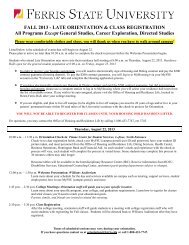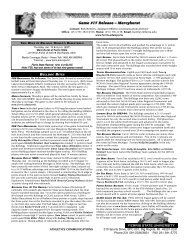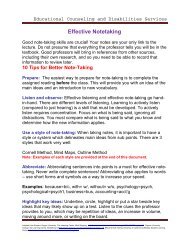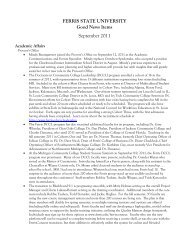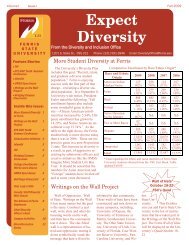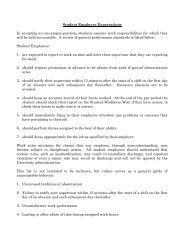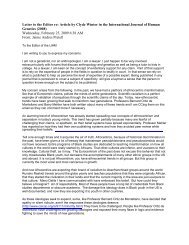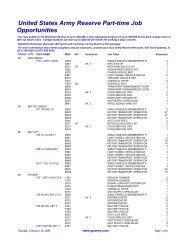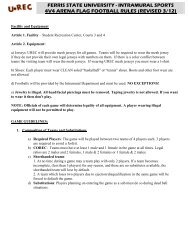Daniel Gasman - Ferris State University
Daniel Gasman - Ferris State University
Daniel Gasman - Ferris State University
Create successful ePaper yourself
Turn your PDF publications into a flip-book with our unique Google optimized e-Paper software.
materialism always referred to the fusion of matter and spirit, 42 and he neglects to assess the major<br />
cultural impact of Haeckel, his basically mystical Monism that mattered the most to Haeckel himself as<br />
well as to the majority of his contemporaries who were searching for a scientific rationale to validate their<br />
own anti-positivist inclinations. 43<br />
In all his works, from his Generelle Morphologie in 1866, right up to his magnum opus, The Riddle of<br />
the Universe in 1899, and beyond, until his death in 1919, Haeckel declared evolutionary Monism to be a<br />
new secular religious faith that held the absolutely final truth about the nature not only of the biological<br />
world, but also of the material cosmos, of man’s existence, of his ‘soul,’ of society, and above all of the<br />
unity of these things. Evolution, Haeckel insisted, was a religion not in a metaphorical, but in a literal<br />
sense, and he was certain that it would of necessity have to replace Christianity, a Judaic inspired religion<br />
rooted in antiquated superstitions and misguided ideals of physical weakness and spiritual<br />
otherworldliness that had cast civilization onto inevitably destructive, mistaken, and dangerous cultural<br />
paths.<br />
In marked contrast to the transcendental deity of the Jews as existing above and beyond the natural<br />
realm, Haeckel’s God was the creative demiurge immanent in the world, the spiritual-and-material sacred<br />
‘substance-and-thought’ or energy that deterministically creates, shapes, and binds into unity the world of<br />
nature and the social and historical existence of man. 44<br />
In the introduction to his religious manifesto of 1892, Monism as Connecting Science and Religion, (a<br />
work listed by Gliboff in his bibliography, but not discussed in the text), Haeckel makes perhaps the most<br />
forceful affirmation of the scientific basis of pantheistic faith conceived in the nineteenth century. He<br />
proclaims absolutely – and in total contradiction to Gliboff’s assertions of Haeckel’s materialism – the<br />
42<br />
Ernst Haeckel, Monism as Connecting Science and Religion, Whitefish, Montana: Kessinger Reprint Edition, n.d ;<br />
18: ‘Our conception of Monism, or the unity—philosophy … is clear and unambiguous; for it an immaterial living<br />
spirit is just as unthinkable as a dead, spiritless material.’ [1892]<br />
43<br />
Haeckelian Monism, therefore, reflects trends toward the supernatural that are described by Jean Pierrot in The<br />
Decadent Imagination, 1800-1900, Chicago: <strong>University</strong> of Chicago Press, 1981.<br />
44<br />
See Ernst Haeckel, The Riddle of the Universe, London: Watts, 1931 [1899], 177; and Monism as Connecting<br />
Science and Religion, 24.<br />
21



